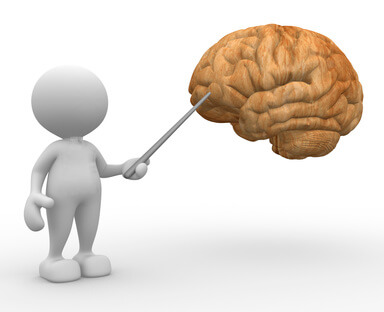During the first few months of life, parents show lots of colorful, noise-making objects to their infant. Slowly, the baby learns to pay attention. The child is doing the work to program the neural pathways for sight.
During the first year of life, parents guide and encourage the little one to sit, and then to stand, and then to take the first unassisted steps. The child is powerfully motivated to do the work because mobility has obvious rewards.
During the first few years of life, parents role-model language. Developing the foundation neural pathways for speech is an arduous learning process, but the child never stops doing the work. Because if you can talk, you can tell people what you want.
Even before pre-school, parents read to their children, teaching the joy and skill of reading. And later in school, they’re introduced to writing and math. It takes countless repetitions to connect the brain cells for these foundation skills, and most kids do the work.
During early childhood, a kid, inspired by curiosity, asks a lot of questions. There’s a lot to learn, lots of dots to connect. Slowly, he or she starts connecting brain cells in the prefrontal cortex for basic “executive skills” – simple reasoning, rule-following, problem-solving, and decision making. The motivation: to find out how things work and to understand their place in their small world, so they can get what they want. The more questions they ask and the more answers they get, the more effective they become.
So far so good.
And then comes middle school and puberty. Unknown to pre-teens and to most parents, growth hormones have triggered the body and brain to grow towards adult maturity, an in-between period we call adolescence, and the child’s prefrontal cortex begins a second, much more massive phase of development. During the teen years, the child has an opportunity to stimulate his or her prefrontal cortex to establish the circuits for more than a dozen profoundly important critical thinking skills.
Will the child do the work?
Maybe. Many kids do.
But maybe not. Because the development process is amazingly slow, invisible and silent. And unlike the basic life skills learned in childhood, the rewards for doing the work aren’t obvious. A kid could do the work and see no result at all. Most young people don’t even know what critical thinking skills are, how to exercise them, or their importance during adolescence and throughout adult life. In a way, it’s like a bad joke. When it comes to wiring the “smart” part of their brain for foundation skills, the intrinsic motivation to the work is just not there.
The kids who get the right mentoring and encouragement to do the work could turn out to have brilliant minds – a huge advantage to a young adult. And those who aren’t that fortunate…not so much. Whatever foundation gets wired will be permanent, because throughout adolescence all the unused brain cell connections in the prefrontal cortex slowly dissolve and are removed from the body. An adult can continue building on what remains, but you can’t build a palace or a skyscraper on a shallow, small foundation.
The lifelong consequences are momentous.
The obvious question: Isn’t there anything a parent can do?
 The short answer: yes. In my book, How Your Teen Can Grow a Smarter Brain, I explain the most effective things a parent can do to optimize the growth of their child’s prefrontal cortex during adolescence. Even though the child has to do the work, a caring, knowledgeable parent can influence the result.
The short answer: yes. In my book, How Your Teen Can Grow a Smarter Brain, I explain the most effective things a parent can do to optimize the growth of their child’s prefrontal cortex during adolescence. Even though the child has to do the work, a caring, knowledgeable parent can influence the result.
You can grow the bond with your child through better listening. Download the FREE ebook, Listening to Understand.

